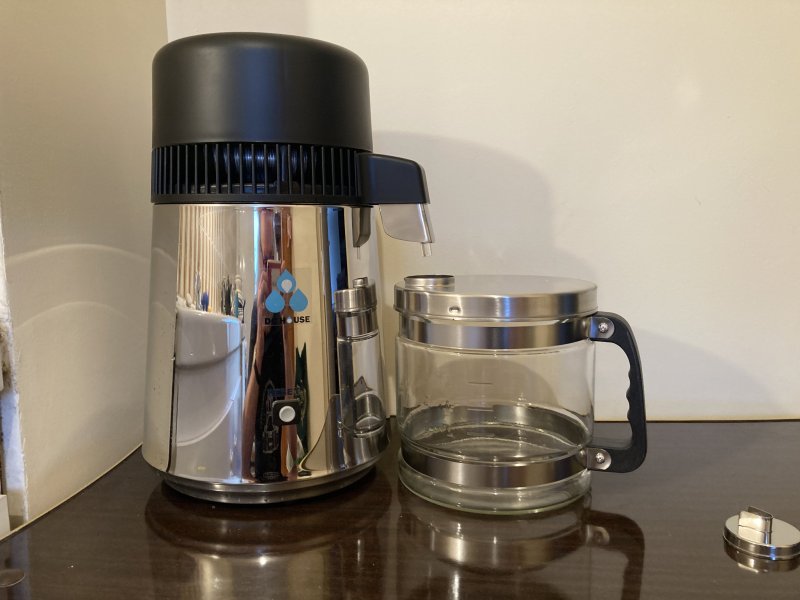The quality of Reverse Osmosis (RO) filtered water is dependent on the quality (total dissolve solids - TDS) of your tap water which can vary from less than 100-ppm to over 600-ppm depending on where you live. It is not uncommon for people to install a demineralizer/deionizer cartridge after the RO filter to get high purity water (<3 ppm TDS). The easy residue test that
@rDin recommended is a quick check. Some people do monitor the water TDS, and this meter is about the cheapest accurate meter you can buy:
https://hmdigital.com/com-100/. The meter is available from many companies with a price of about $50.
Are you using the cleaning agent that Degritter supplies, and if so, how much are you adding to a tank? Although Degritter may indicate that the cleaning agent used as recommended requires no-rinse, the experience of users indicates otherwise. To determine, clean a record as you have, then dump the cleaning fluid from the tank, partly fill with your RO-water only, and flush the tank to remove most residue from the cleaning agent, and then fill as required with your RO-water and clean + dry the record a 2nd time. The 2nd cleaning should remove/rinse any cleaning agent residue from the 1st clean provided the RO water is reasonable pure. Not that many people buy a 2nd tank so that they can clean/rinse; and the Degritter has a function that stops are the 1st clean without drying to allow the user to install the rinse tank.
Alternatively, switch to a no-rinse cleaning agent concentration, which will provide only wetting with no detergency. In this case, with the right cleaning agent such as Tergitol 15-S-9 (
https://www.talasonline.com/Tergitol-15-S-3-and-15-S-9?quantity=1&size=32&quality=15) used at only 0.005%, the cleaning agent concentration is very low and most people use as a no-rinse cleaning solution. Note that 15--S-9 at 0075% will provide wetting rinsing is recommended. If you decide on using Tergitol 15-S-9 (or an equivalent), see Table XXIII in this free book -
https://thevinylpress.com/precision-aqueous-cleaning-of-vinyl-records-3rd-edition/ for good directions on how to prepare and use.
Thanks, the reverse osmosis water I use comes from a kidney dialysis unit and is controlled, free of any residue because it comes into contact with patients' blood. I'm using two trays and rinsing them. Today I washed two LPs without detergent and they came out clean. We'll see.


